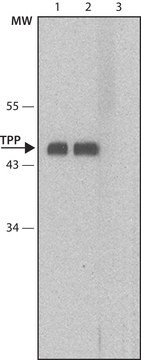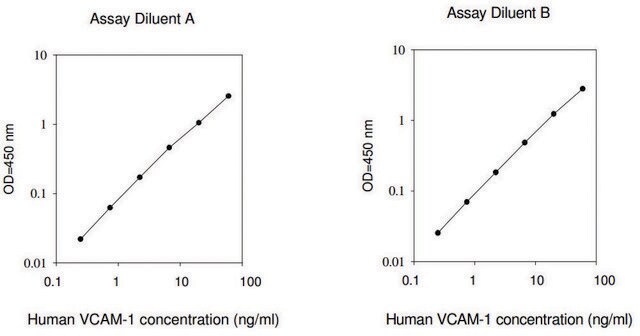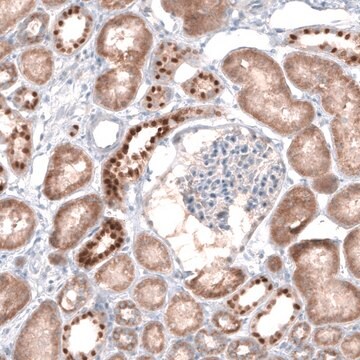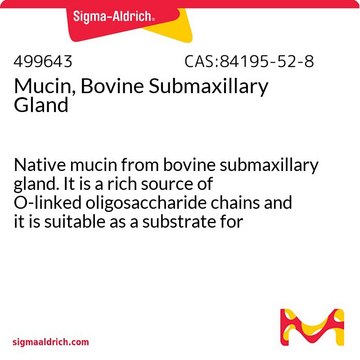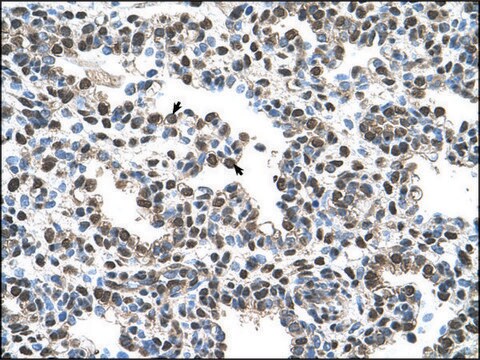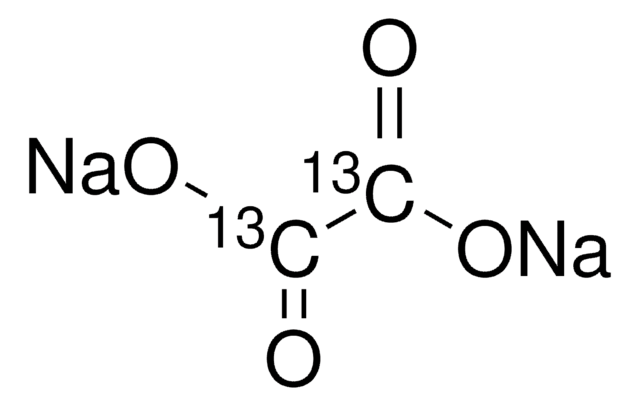推荐产品
生物源
rabbit
品質等級
共軛
unconjugated
抗體表格
IgG fraction of antiserum
抗體產品種類
primary antibodies
無性繁殖
polyclonal
形狀
buffered aqueous solution
分子量
38 kDa
物種活性
human
濃度
0.5 mg - 1 mg/mL
技術
immunohistochemistry: suitable
western blot: suitable
NCBI登錄號
UniProt登錄號
運輸包裝
wet ice
儲存溫度
−20°C
目標翻譯後修改
glycosylation
基因資訊
human ... AGER(177)
一般說明
The receptor for advanced glycation end products (RAGE or AGER), a member of the immunoglobulin superfamily, is involved in pathologies such as atherosclerosis, micro- and macrovascular diseases, inflammatory diseases and diabetes. RAGE binds advanced glycation end products (AGE) produced by non-enzymatic glycation or glyoxidation of proteins, lipids and nucleic acids.
The previously assigned protein identifier A2BFI7 has been merged into Q15109. Full details can be found on the UniProt database.
The previously assigned protein identifier A2BFI7 has been merged into Q15109. Full details can be found on the UniProt database.
特異性
Anti-RAGE (AB2) polyclonal antibody reacts with human advanced glycosylation end product-specific receptor (AGER).
免疫原
Synthetic peptide directed towards the C terminal region of human AGER
應用
Anti-AGER (AB2) polyclonal antibody is used to tag advanced glycation end product receptor protein(s) for detection and quantitation by Western blotting and in cells and tissues by immunohistochemical (IHC) techniques. Anti-AGER (AB2) polyclonal antibody may be used to study the effects/roles of glycation and glyoxidation in cardiovascular disease and diabetes.
生化/生理作用
AGER mediates interactions of advanced glycosylation end products (AGE). These are nonenzymatically glycosylated proteins which accumulate in vascular tissue in aging and at an accelerated rate in diabetes. It is receptor for amyloid beta peptide.This gene encodes a member of the immunoglobulin superfamily of cell surface molecules. It is a receptor for various molecules, including the amyloidogenic form of serum amyloid A, amyloid-beta protein, members of the S100/calgranulin superfamily and advanced glycation end products. The gene lies within the major histocompatibility complex (MHC) class III region on chromosome 6. Alternative splicing results in two transcript variants encoding different isoforms.
序列
Synthetic peptide located within the following region: RIRAGNSSPGPGDPGRPGDSRPAHWGHLVAKAATPRRGEEGPRKPGGRGG
外觀
Purified antibody supplied in 1x PBS buffer with 0.09% (w/v) sodium azide and 2% sucrose.
免責聲明
Unless otherwise stated in our catalog or other company documentation accompanying the product(s), our products are intended for research use only and are not to be used for any other purpose, which includes but is not limited to, unauthorized commercial uses, in vitro diagnostic uses, ex vivo or in vivo therapeutic uses or any type of consumption or application to humans or animals.
未找到合适的产品?
试试我们的产品选型工具.
儲存類別代碼
10 - Combustible liquids
水污染物質分類(WGK)
WGK 3
閃點(°F)
Not applicable
閃點(°C)
Not applicable
Jae-Chul Lee et al.
Neurochemical research, 39(8), 1553-1563 (2014-06-02)
The receptor for advanced glycation end products (RAGE) is a multi-ligand receptor of the immunoglobulin superfamily that has been implicated in multiple neuronal and inflammatory stress processes. In this study, we examined changes in RAGE immunoreactivity and its protein levels
Rongzhen Jiang et al.
Journal of immunology (Baltimore, Md. : 1950), 193(10), 5000-5012 (2014-10-24)
High mobility group box 1 (HMGB1) plays an important role in the pathologic processes of endothelial permeability under oxidative stress. Trophoblast oxidative stress has been implicated in the pathophysiology of preeclampsia (PE). HMGB1 serum levels are increased in PE. However
Anisuzzaman et al.
The Journal of clinical investigation, 124(10), 4429-4444 (2014-11-18)
Ticks are notorious hematophagous ectoparasites and vectors of many deadly pathogens. As an effective vector, ticks must break the strong barrier provided by the skin of their host during feeding, and their saliva contains a complex mixture of bioactive molecules
Julia Ranzinger et al.
Cell and tissue research, 357(3), 667-679 (2014-05-30)
The receptor for advanced glycation end-products (RAGE), a multiligand receptor of the immunoglobulin superfamily, takes part in various inflammatory processes. The role of this receptor in the context of intercellular communication, like nanotube (NT)-mediated interaction, is largely unknown. Here, we
我们的科学家团队拥有各种研究领域经验,包括生命科学、材料科学、化学合成、色谱、分析及许多其他领域.
联系技术服务部门

